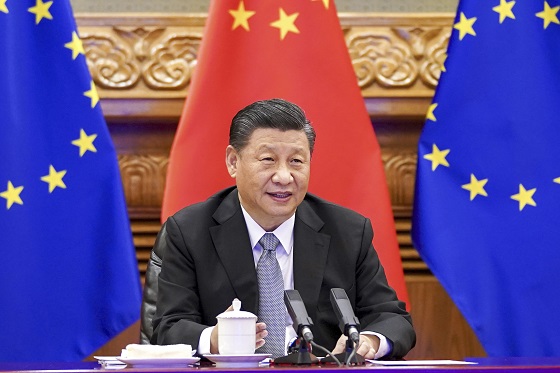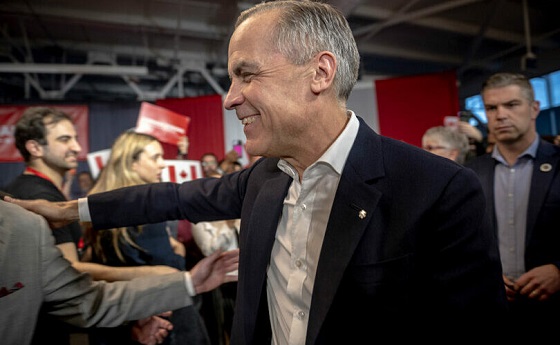Economy
Ottawa’s proposed ‘electricity’ regulations may leave Canadians out in the cold

From the Fraser Institute
In case you haven’t heard, the Trudeau government has proposed a new set of “Clean Electricity Regulations” (CERs) to purportedly reduce the use of fossil fuels in generating electricity. Basically, the CERs would establish new standards for the generation of electricity, limiting the amount of greenhouse gases that can be emitted in the process, and would apply to any unit that uses fossil fuels (coal, natural gas, oil) to generate electricity.
The CERs would hit hardest provinces that rely on fossil fuels to generate electricity: Alberta (89 per cent fossil fuels), Saskatchewan (81 per cent), Nova Scotia (76 per cent) and New Brunswick (30 per cent). Not so much Ontario (7 per cent) and Quebec (1 per cent), which are blessed with vast hydro potential.
In theory, the government has been in “consultation” with electricity producers and the provinces that will be most impacted by the CERs, although some doubt the government’s sincerity.
For example, according to Francis Bradley, CEO of Electricity Canada, which advocates for electricity companies, there is “insufficient time to analyze and provide feedback that could meaningfully impact the regulatory design” adding that the “engagement process has failed to achieve its purpose.” And consequently, the current design of the CERS may impose “significant impairments to the reliability of the electricity system and severe affordability impacts in many parts of the country.”
This was not the first time folks observed a lack of meaningful consultation over the CERs. Earlier this year, Alberta Environment Minister Rebecca Schulz told CBC that an update to the CERs made “no meaningful corrections to the most destructive piece of Canadian electricity regulation in decades” and that CERs “would jeopardize reliability and affordability of power in the province.”
Simply put, with CERs the Trudeau government is gambling with high stakes—namely, the ability of Canadians to access reliable affordable electricity. Previous efforts at decarbonizing electrical systems in Ontario and around the world suggest that such efforts are relatively slow to develop, are expensive, and are often accompanied by periods of electrical system destabilization.
In Ontario, for example, while the provincial government removed coal-generation from its electricity generation from 2010 to 2016, Ontario’s residential electricity costs increased by 71 per cent, far outpacing the 34 per cent average growth in electricity prices across Canada at the time. In 2016, Toronto residents paid $60 more per month than the average Canadian for electricity. And between 2010 and 2016, large industrial users in Toronto and Ottawa experienced cost spikes of 53 per cent and 46 per cent, respectively, while the average increase in electric costs for the rest of Canada was only 14 per cent. Not encouraging stats, if you live in province targeted by CERs.
Reportedly, the Trudeau government plans to release a final version of the new CERs rules by the end of this year. Clearly, in light of the government’s failure to meaningfully consult with the electrical-generation sector and the provinces, the CERs should be put on hold to allow for longer and more sincere efforts to consult before these regulations go into effect and become too entrenched for reform by a future government.
Otherwise, Canadians may pay a steep price for Trudeau’s gamble.
Author:
Business
Trump: China’s tariffs to “come down substantially” after negotiations with Xi

 MxM News
MxM News
Quick Hit:
President Trump said the 145% tariff rate on Chinese imports will drop significantly once a deal is struck with Chinese President Xi Jinping, expressing confidence that a new agreement is on the horizon.
Key Details:
- Trump said the current 145% tariff rate on China “won’t be anywhere near that high” after negotiations.
- He pointed to his relationship with Xi Jinping as a reason for optimism.
- The White House said it is preparing the groundwork for a deal, and Treasury officials expect a “de-escalation” of the trade war.
Diving Deeper:
President Donald Trump on Tuesday told reporters that the steep tariff rate currently imposed on Chinese imports will come down substantially after his administration finalizes a new trade deal with Chinese President Xi Jinping. While the current level stands at 145%, Trump made clear that number was temporary and would be adjusted following talks with Beijing.
“145 percent is very high. It won’t be that high, it’s not going to be that high … it won’t be anywhere near that high,” Trump said from the Oval Office, signaling a shift once a bilateral agreement is reached. “It will come down substantially, but it won’t be zero.”
The tariff, which Trump previously described as “reciprocal,” was maintained on China even after he delayed similar penalties on other trading partners. Those were cut to 10% and paused for 90 days to allow room for further negotiation.
“We’re going to be very nice. They’re going to be very nice, and we’ll see what happens. But ultimately, they have to make a deal because otherwise they’re not going to be able to deal in the United States,” Trump said, reinforcing his view that the U.S. holds the leverage.
Trump’s remarks come as markets remain wary of ongoing trade tensions, though the White House signaled progress, saying it is “setting the stage for a deal with China.” The president cited his personal rapport with Xi Jinping as a key factor in his confidence that an agreement can be reached.
“China was taking us for a ride, and it’s not going to happen,” Trump said. “They would make billions a year off us and build up their military with our money. That’s over. But we’ll still be good to China, and I think we’ll work together.”
Treasury Secretary Scott Bessent also said Tuesday that he expects a cooling of trade hostilities between the two nations, according to several reports from a private meeting with investors.
As the 90-day pause on other reciprocal tariffs nears its end, Trump emphasized that his team is prepared to finalize deals quickly. “We’ve been in talks with many, many world leaders,” he said, expressing confidence that talks will “go pretty quickly.”
White House Press Secretary Karoline Leavitt added that the administration has received 18 formal proposals from other countries engaged in trade negotiations, another sign that momentum is building behind Trump’s broader push to restructure global trade in favor of American workers and businesses.
(Li Xueren/Xinhua via AP)
2025 Federal Election
Next federal government should end corporate welfare for forced EV transition

From the Fraser Institute
By Tegan Hill and Jake Fuss
Corporate welfare simply shifts jobs and investment away from other firms and industries—which are more productive, as they don’t require government funding to be economically viable—to the governments’ preferred industries and firms, circumventing the preferences of consumers and investors. And since politicians spend other people’s money, they have little incentive to be careful investors.
General Motors recently announced the temporary closure of its electric vehicle (EV) manufacturing plant in Ontario, laying off 500 people because its new EV isn’t selling. The plant will shut down for six months despite hundreds of millions in government subsides financed by taxpayers. This is just one more example of corporate welfare—when governments subsidize favoured industries and companies—and it’s time for the provinces and the next federal government to eliminate it.
Between the federal government and Ontario government, GM received about $500 million to help fund its EV transition. But this is just one example of corporate welfare in the auto sector. Stellantis and Volkswagen will receive about $28 billion in government subsidies while Honda is promised $5 billion.
More broadly, from 2007 to 2019, the last pre-COVID year of data, the federal government spent an estimated $84.6 billion (adjusted for inflation) on corporate welfare while provincial and local governments spent another $302.9 billion. And crucially, these numbers exclude other forms of government support such as loan guarantees, direct investments and regulatory privileges, so the actual cost of corporate welfare during this period was much higher.
Of course, politicians claim that corporate welfare benefits workers. Yet according to a significant body of research, corporate welfare fails to generate widespread economic benefit. Think of it this way—if the businesses that received subsidies were viable to begin with, they wouldn’t need government support. So unprofitable companies are kept in business through governments’ support, which can prevent resources, including investment and workers, from moving to profitable companies, hurting overall economic growth.
Put differently, rather than fuelling economic growth, corporate welfare simply shifts jobs and investment away from other firms and industries—which are more productive, as they don’t require government funding to be economically viable—to the governments’ preferred industries and firms, circumventing the preferences of consumers and investors. And since politicians spend other people’s money, they have little incentive to be careful investors.
Governments also must impose higher tax rates on everyone else to pay for corporate welfare. In turn, higher tax rates discourage entrepreneurship and business investment—again, which fuels economic growth. And the higher the tax rates, the more economic activity they discourage.
GM’s EV plant shut down once again proves that when governments try to engineer the economy with corporate welfare, workers will ultimately lose. It’s time for the provinces and the next federal government—whoever it may be—to finally put an end to this costly and ineffective policy approach.
-

 2025 Federal Election2 days ago
2025 Federal Election2 days agoBREAKING: THE FEDERAL BRIEF THAT SHOULD SINK CARNEY
-

 2025 Federal Election2 days ago
2025 Federal Election2 days agoCHINESE ELECTION THREAT WARNING: Conservative Candidate Joe Tay Paused Public Campaign
-

 2025 Federal Election1 day ago
2025 Federal Election1 day agoMark Carney Wants You to Forget He Clearly Opposes the Development and Export of Canada’s Natural Resources
-

 International23 hours ago
International23 hours agoPope Francis’ body on display at the Vatican until Friday
-

 2025 Federal Election1 day ago
2025 Federal Election1 day agoCanada’s pipeline builders ready to get to work
-

 Business1 day ago
Business1 day agoHudson’s Bay Bid Raises Red Flags Over Foreign Influence
-

 John Stossel2 days ago
John Stossel2 days agoClimate Change Myths Part 2: Wildfires, Drought, Rising Sea Level, and Coral Reefs
-

 2025 Federal Election13 hours ago
2025 Federal Election13 hours agoFormer WEF insider accuses Mark Carney of using fear tactics to usher globalism into Canada




